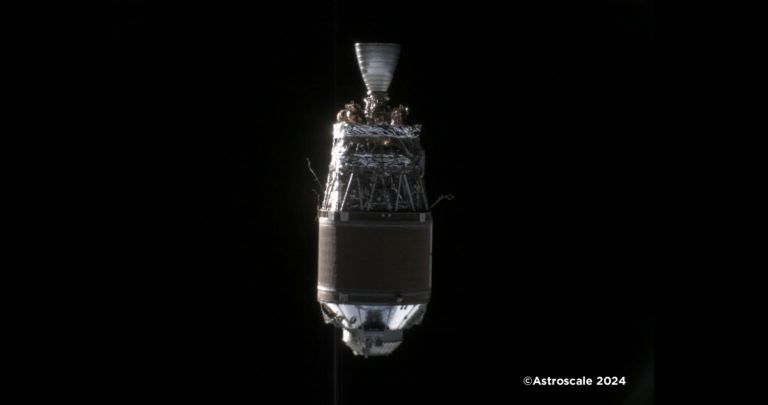Although there is a lot of space in Earth orbit, there are also some seriously big man-made objects in those orbits, some of which have been there for decades. As part of efforts to remove at least some of this debris from orbit, Astroscale’s ADRAS-J (“Active Debris Removal by Astroscale-Japan”) satellite has been partaking in JAXA’s Commercial Removal of Space Debris Demonstration (CRD2). After ADRAS-J was launched by a Rocket Lab Electron rocket on February 18, it’s been moving closer to its target, with June 14th seeing an approach by roughly 50 meters, allowing for an unprecedented photo to be made of the H-2A stage in orbit. This upper stage of a Japanese H-2A rocket originally launched the GOSAT Earth observation satellite into orbit back in 2009.
The challenges with this kind of approach is that the orbital debris does not actively broadcast its location, ergo it requires a combination of on-ground and on-satellite tracking to match the orbital trajectory for a safe approach. Here ADRAS-J uses what is called Model Matching Navigation (MNM), which uses known visual information to compare it with captured images, to use these to estimate the relative distance to the target.
Although the goal of ADRAS-J is only to study the target from as closely as possible, the next phase in the CRD2 program would involve actively deorbiting this upper stage, with phase start projected to commence in 2026.
Thanks to [Stephen Walters] for the tip.
